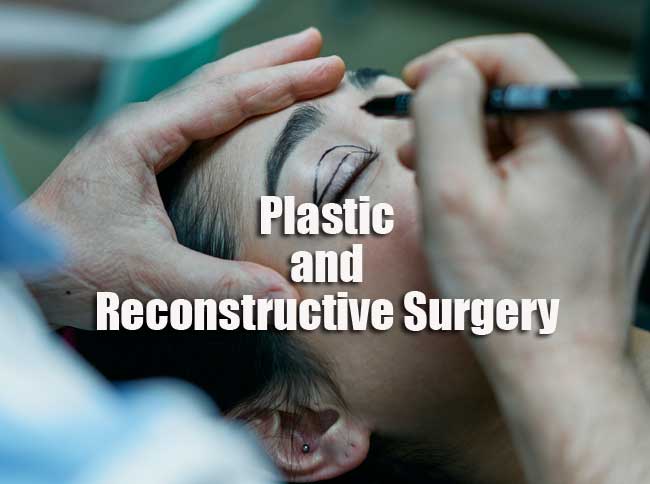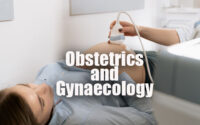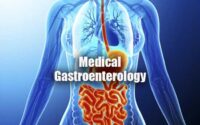Plastic and Reconstructive Surgery Questions and Answers
Plastic and Reconstructive Surgery Questions and Answers paper for the written examination is given below. Candidates who are looking for Plastic and Reconstructive Surgery exam Questions and Answers paper can find in this section. The applied candidates who are getting prepared for the Plastic and Reconstructive Surgery can view this page for the Plastic and Reconstructive Surgery Last Ten Years Questions and Answers Papers.

Download the Plastic and Reconstructive Surgery Questions and Answers & Solutions & make it as a reference for your exam preparation. Take advantage of these Plastic and Reconstructive Surgery Questions and Answers Papers in a proper manner to get qualifying Marks. Last 5 years Plastic and Reconstructive Surgery Questions and Answers Papers provided here. Candidates who are applied for the above exam can check and download the Plastic and Reconstructive Surgery Questions and Answers Papers from here.
Questions and Answers on Plastic and Reconstructive Surgery
1. A Z-plasty is a
(1) Rotation flap
(2) Advancement flap
(3) Transposition flap
(4) Pedicle flap
2. The modern medical ethical principle of moral obligation to protect patients from harm and injustice is which one of the following :
(1) Casuistry
(2) Non-maleficence
(3) Beneficence
(4) Primum non nocere
3. Which flap is not a part of the subscapular vascular axis ?
(1) Serratus anterior flap
(2) Latissimus dorsi flap
(3) Intercostal perforator artery flap
(4) Thoracodorsal perforator flap
4. Following tissue expansion
(1) Thickness of epidermis increases
(2) Thickness of epidermis decreases
(3) Thickness of dermis increases
(4) Fat increases
5. Whose name is associated with full thickness skin graft ?
(1) Oliier
(2) Thiersch
(3) Wolfe
(4) Santoni
6. Which of the following statement is true for Integra ?
(1) it is microbiologically inert and easily causes infection
(2) it is a bilaminar biodegradable tissue engineered dermal matrix generation template
(3) its major disadvantage in burn reconstruction is its contraction
(4) it is a biodegradable skin regeneration template
7. The groin flap is usually based on
(1) superficial circumflex iliac artery
(2) superficial circumflex femoral artery
(3) superficial inferior epigastric artery
(4) lateral circumflex artery
8. According to the Mathes and Nahai classification Sartorius is a :
(1) Type I muscle flap
(2) Type II muscle flap
(3) Type III muscle flap
(4) Type IV muscle flap
9. Obstetrical brachial plexus injury most frequently involves :
(1) C8T1
(2) All cervical roots
(3) Only C5
(4) Upper plexus C5 C6 and C7
10. The initial event in the development of Boutonniere deformity is
(1) lateral and palmar migration of extensor lateral bands
(2) laxity or rupture of proximal interphalangeal joint volar plate
(3) Hyperextension of distal interphalangeal joint
(4) loss of continuity of the central slip insertion into the back of the base of middle phalanx
11. Position of wrist, metacarpophalangeal joint and proximal interphalangeal joint in safe position of immobilisation respectively is :
(1) 0 — 30° extension — 70° to 90° flexion — full extension
(2) 0 — 30° flexion — 70° to 90° flexion — full extension
(3) 0 — 30° flexion — straight — full flexion
(4) 0 — 30° extension — 70° to 90° extension — full flexion
12. Pollicisation for traumatic amputation of thumb in older children differs from that in young children with congenital absence of thumb in :
(1) Traumatic cases of older children require a bone graft necessarily to replace the missing metacarpal
(2) Traumatic cases of older children require shortening of flexor tendons necessarily
(3) In younger patients, the extensor tendons do not need shortening
(4) Extensor tendons do not need shortening in older patients
13. Which is correct in relation to replantation of a digit ?
(1) Advisable at the level of distal interphalangeal joint (DIP)
(2) Generally recommended for proximal urbaniak class III ring avulsion
(3) Should only be considered with guillotine injuries
(4) Is not successful when cold ischaemia exceeds 24 hours
14. A forty year female has a pinpoint tenderness at the base of deformed nail in ring finger. The area is painful to touch and sensitive to cold. The most likely diagnosis is :
(1) Giant cell tumour
(2) Glomus tumour
(3) Epidermal inclusion cyst
(4) Ganglion cyst
15. Usual relation of the digital nerve to digital artery in the finger is :
(1) Dorsal
(2) Volar
(3) Proximal
(4) Distal
16. The carpal tunnel
(1) is formed by proximal and distal carpal rows and the flexor retinaculum
(2) contains the ulnar artery
(3) contains the ulnar nerve
(4) contains the tendon of palmaris longus
17. In De Quervain’s tenosynovitis all are true except :
(1) High incidence is seen in women
(2) Multiple slips of both Abductor Pollicis Longus (APL) and Extensor Pollicis Brevis (EPB) can be present
(3) Assessment can be done by Finkelstein’s test
(4) Steroid injection and splintage are better than either alone
18. All is true of the ulnar nerve in Guyon’s tunnel except
(1) can cause Ramsay hunt syndrome
(2) compression in zone I results in sensory and motor palsy
(3) compression in the first portion of zone 2 results in motor symptoms only
(4) compression in the third zone results in sensory symptoms only
19. Infectious causes of mononeuropathies include all except :
(1) Schistosomiasis
(2) Leprosy
(3) Lyme disease
(4) Herpes Zoster
20. Amniotic band syndrome is associated with all except
(1) Constriction rings
(2) Ectodermal necrosis aetiological theory
(3) Patterson classification
(4) Lymphoedema
| Practice Set | MCQs |
| Quiz | Questions and Answers |
21. The ‘Middle Finger Extension Test’ is useful for all except
(1) Intrinsic Tightness
(2) Radial tunnel syndrome
(3) Lateral epicondylitis
(4) Posterior interosseous nerve palsy
22. In Duputyren’s disease
(1) there is an increased ratio of Type I to Type III collagen
(2) there is an increased ratio of Type II to Type III collagen
(3) there is an increased ratio of Type III to Type I collagen
(4) there is an increased ratio of Type II to Type I collagen
23. In the surgical treatment of trigger finger what structure is incised :
(1) Al pulley alone
(2) A2 pulley
(3) A4 pulley
(4) Both Grayson’s ligament and the Al pulley
24. Regarding syndactyly all are true except
(1) Most common congenital hand deficiencies 1 per 2000 to 2,500 live births.
(2) Strong familial tendency (10- 40%.
(3) Males are affected twice as frequently as females.
(4) Web creep is less likely to occur if the separation is performed before the age of two.
25. In hand embryology :
(1) The apical ectodermal ridge secretes fibroblast derived growth factor 4.
(2) The apical ectodermal ridge governs thumb development.
(3) The apical ectodermal ridge influences the sonic hedgehog gene.
(4) The apical ectodermal ridge controls the dorsoventral axis.
26. In rehabilitation of tendon injuries :
(1) A volar slab is best for flexor tendon injuries
(2) A dorsal slab in extension is best for flexor tendon injuries
(3) Klienest traction is reserved for thumb injuries
(4) The Belfast regime is a CAM (controlled active motion) regime
27. Most appropriate angles for fusion of the digits are :
(1) Thumb — neutral IP joint, neutral MCP joint.
(2) Thumb — neutral IP joint, 45° MCP joint.
(3) Index — 5° DIP joint, 40° PIP joint, 25° MCP joint
(4) Index — 10° DIP joint, 10° PIP joint, neutral MCP joint
28. The autonomous zone for the median nerve in hand is :
(1) Index finger tip
(2) Middle finger tip
(3) Small finger tip
(4) Dorsal side of the first web space
29. The anaesthetic effect of a local anaesthetic is produced by
(1) preventing passage of sodium
(2) preventing passage of potassium
(3) preventing passage of calcium
(4) preventing passage of carbonate
30. Which one of the following is likely to result in a hook nail deformity ?
(1) Deep laceration of more than 50% of nail and its bed
(2) Crush injury to the nail bed and bone
(3) Bony avulsion of more than 50% of nail and its bed
(4) Paronychia
31. The structure that contributes to the rigid flexion in a fixed flexion contracture of proximal interphalangeal joint (PIP joint) is :
(1) collateral ligament
(2) contracted proximal part of volar plate
(3) accessory collateral ligament
(4) rigid dorsal part of the volar plate
32. If the flexor digitorum profundus (FDP) insertion is transected and the | tendon is allowed to retract, it may lead to the development of :
(1) lumbrical plus finger
(2) Lumbrical minus finger
(3) Quadriga effect
(4) No effect
33. The parotid duct is vulnerable to injury in facial lacerations. Where is it located in the face ?
(1) lies on the middle third of a line between tragus and middle of upper lip.
(2) lies on the anterior third of a line between tragus and middle of upper lip.
(3) lies on the posterior third of a line between tragus and middle of upper lip.
(4) lies on the middle third of a line between tragus and angle of mouth.
34. A high score in Glasgow Coma Scale (GCS) is an indication of :
(1) Good prognosis
(2) Bad prognosis
(3) Deterioration in patient’s condition
(4) Impending coma
35. Which one of the following procedures is suitable for treating large postburn medial canthal webs ?
(1) Z-plasty
(2) Double Z-plasty
(3) V-M plasty
(4) Scar excision and full thickness grafting
36. T3 N3 MO Squamous Cell Carcinoma (SCC) of the alveolus of the mandibular symphysis may need the following except :
(1) free fibular osteocutaneous flap
(2) bilateral radical neck dissection with preservation of left internal jugular vein
(3) marginal mandibulectomy
(4) post operative radiotherapy
37. Based on orbital reconstruction, the blow -out fractures may be categorised into the following types except –
(1) Single hinge
(2) Double hinge
(3) Trap door
(4) Comminuted type
38. Which of the following cystic tumours of the neck are not appropriately matched to their frequency and age of occurrence ?
(1) Infant — thyroglossal duct cyst — most frequent
(2) Adult – thyroglossal duct cyst — most frequent
(3) Adult-cervical thymic cyst — very uncommon
(4) Adult — metastatic cystic carcinoma — most frequent
39. In children below the age of 5 years which of the following facial bones is likely to fracture :
(1) condyle of mandible
(2) neck of mandible
(3) symphysis of mandible
(4) parasymphyseal region of mandible
40. The preferred approach and point of entry for the temporo-mandibular joint arthroscopy is
(1) along a line from tragus to the tip of nose
(2) along a line from the tragus to angle of mouth
(3) along a line from the tragus to lateral canthus
(4) along a line from tragus to menton
41. Full thickness cranial defect located near the frontal sinus should preferably be managed by
(1) Bone cement
(2) Hydroxyapatite cement
(3) Acrylic mould
(4) Calvarial graft
42. The ‘Crane Principle’ is commonly used for restoration of which defects ?
(1) Avulsive skin loss
(2) Muscle defect
(3) Bone defect
(4) Nerve defect
43. Which is the common plane of scalp avulsion ?
(1) skin and subcutaneous tissue level
(2) galea aponeurotica
(3) loose areolar tissue
(4) pericranium
44. Which of the following techniques uses the maximum amount of rib cartilage in frame work design in auricular reconstruction ?
(1) Tanzer
(2) Brent
(3) Nagata
(4) Spina
45. Cauliflower ear is common in
(1) Mountain climbers
(2) Pugilists
(3) Post burn chondritis
(4) Benign ear tumours



